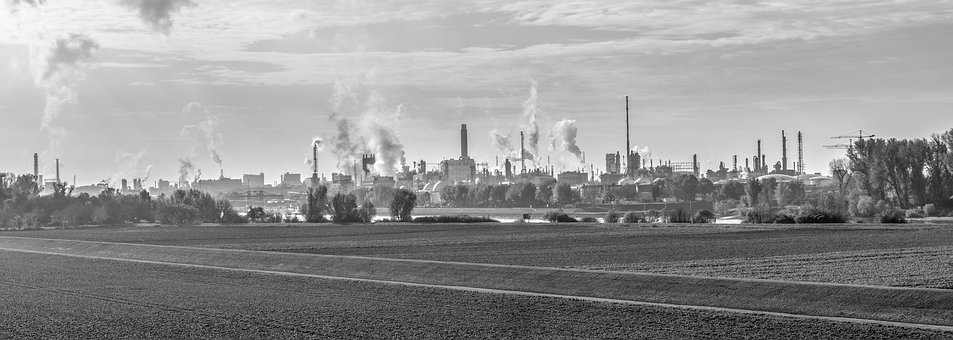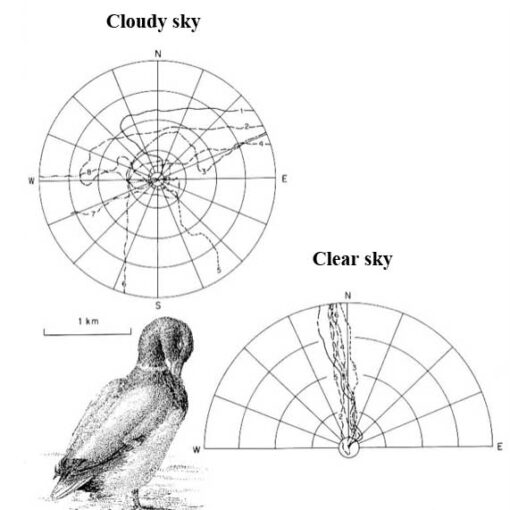
Reworking with additions to the text of P.R. Ehrlich Global change and its influence on biodiversity (R.Casagrandi & P. Melia (Eds) Proceedings of the XIII National Congress of the Italian Society of Ecology, Como, 8-10 September 2003. SItE Acts 27: 35-45).
The article begins with a reference to the impressive dimension of global changes induced by human activities. The human population over the past 16,000 years has expanded over a thousand times. And in the last two centuries there has been an incredible acceleration of the pressure exerted by the human population, which has increased by at least six times, leading to a 30-40 times increase in industrial activities and its environmental impact: the Homo sapiens species has become a global geological force by altering the Earth’s albedo, changing the composition of the atmosphere and mobilizing many minerals at a rate comparable to that of natural erosion processes due to wind and water; at the same time it has channeled the productivity of the Earth (reaching directly or indirectly half of the net primary productivity of the biosphere) and has used the energy resources contained in fossil fuels for the increasingly expensive management of human systems. He has changed his face to the planet to satisfy his needs. Humanity has become the engine of global change.
The loss of biodiversity, which represents an irreplaceable environmental heritage and therefore the most precious resource of natural capital, is the most crucial of the changes induced by global change, since the preservation of other forms of life is the condition for guaranteeing man the continuous supply of essential services and products that are made available by ecosystems. How can humanity, then, preserve the natural capital and the ecosystem services that emanate from it? One possibility is to increase the surface of the areas of naturalistic value to be protected on a planetary level. A study by Balmford et al. (2002) has led to estimate that the benefits of maintaining the current reserve of “wild nature” areas is at least 100 times higher than the costs foreseen for their conservation. But one of the most important causes of the disastrous tendency to the loss of biodiversity (and, therefore, of the services connected to ecosystems) is recognizable in the inadequate and unsuccessful functioning of the market. Many of the benefits flowing from natural capital are positive externalities for society (meaning externality benefits or costs that do not enter market prices). Among the positive externalities provided by natural forests lies the key function of carbon sequestration, a process that reduces the chances of catastrophic climate change for all of us. The value of essential ecological functions is rarely taken into account by the market. Similarly, the calculation of costs associated with the conversion of natural habitats into anthropized areas does not include several negative externalities, such as the increased risk of flooding and carbon emission into the atmosphere associated with forest cutting (or urbanization of green areas).
Some relevant operational choices were prompted by researches that already in the seventies and eighties of the last century had signaled the alarming acceleration of the rate of biodiversity loss (Myers 1978, 1988 and 1990, Marshall & Ward 1996), a process considered comparable to extinction that 65 million years ago led to the extermination of dinosaurs. It was Myers, based on the observation that a very high share of global biodiversity is concentrated on limited areas (“hotspots”) that represent a relatively small portion of the planet, to propose the strategy of engaging in the protection of these areas the maximum effort of research and resources. On the other hand, it is no less important to commit ourselves to the goal of blocking the tendency to extinction of populations (Ehrlich & Daily 1993, Daily & Ehrlich 1995). Hughes et al. (1997 and 2000) have attempted an estimate of the global number of populations, reaching the impressive figure (which does not include microorganisms, fungi and nematodes) of 6.6 billion and indicating that the risk of extinction is much higher for the populations than for the species. The extinction of half of the species in a certain area is associated with the first approximation to the destruction of 90% of the habitats. The same effect on populations is caused by the loss of about 50% of the habitats in the area where they are located. For the regions of the tropical forest an annual loss rate of 16 million populations is calculated. It is therefore evident the importance of preserving, in addition to the “hotspots” with a high diversity of species, also the “coldspots” that are not characterized by a high specific richness but host many populations of a few species that perform essential ecological functions on which it depends the release of basic services for the wellbeing of human communities. It goes without saying that the extinction of a population must be considered with concern because, in any case, it represents an event that can contribute to raising the risk of extinction for the species to which it belongs.
The focal theme is that of services, supported by the presence and activities and functions of the living, which natural ecosystems are able to provide and their decisive value in the management of human systems. Human societies could not exist without the continuity of the provision of the services of nature: the stability of the quality and composition of the atmosphere; the modulation of climatic and meteorological characteristics; the stabilization of the water cycle and the mitigation of extreme destructive events represented by long periods of drought and storms and ruinous floods; the recycling of nutrients; detoxification and purification of urban and industrial effluents; conservation and regeneration of soils; pollination (with particular regard to agricultural and forest crops); the control of pests and vectors of human diseases; the use of plants and animals for the production of new medicines; the extraction of materials for industry and food, not only from agricultural areas, but also from other aquatic and terrestrial environments …
The effects of the expansion of human activities, of the ever closer control over natural capital, of the ever more incisive diversion of the productivity of natural systems to the growing needs of unconscious management practices of human systems are devastating. Man’s interference with natural systems is affecting the basic biogeochemical processes that make the Earth habitable. We are putting into play the future of our home and the future of humanity. Significant in this regard is the criticality represented by the destabilization of the climate. The evidence is incontrovertible. In the last century the average temperature of the earth’s surface has increased by 0.6 ° C. In the last decade of the last century, temperatures have been recorded that are probably the highest in the last two thousand years. And these evidences risk to appear negligible compared to the changes that can be foreseen for the next decades. The point that deserves more attention and which must lead us to reflect with concern about the risks that human societies run concerns the non-linearity of the climate system. Schneider (1997) has reconstructed in detail an event that occurred in northeastern Canada 13,000 years ago: the sudden return, within a few decades, to the glaciation of this region (a mini glacial age, known as “Younger Dryas”, which lasted half a millennium), probably due to the outflow in the Saint Lawrence basin and then in the north Atlantic of the waters of a gigantic lake no longer held by the ice dam . The possibility of surprises like this can not be excluded. A sudden heating of the same scale and scale of cooling of the “Younger Dryas” would have, on the human populations permanently settled in the cities and near fertile agricultural areas, catastrophic effects much heavier than those who then had to suffer the nomadic populations of hunters and gatherers. The mini glacial era had destructive consequences on the flora and fauna of the affected region, but it provided substantial food availability (deer, bison, mammoths escaping from glacial areas) to European hunters.

Forcing the global impact: the size of the human population, consumption, technologies
The forcing of the impact that puts at risk the preservation of the systems supporting human life are due to population growth, excess consumption and the use of incorrect technologies combined with social, political and economic dynamics that facilitate and promote consumption (Ehrlich, 1990 and 1995). A simplified expression (I = PAT) makes it possible to calculate the environmental impact of a company (I) as a product of the number of people (P) for the turnout (A) measured on the basis of consumption levels and by a factor T which describes the technologies used for the production of consumed goods, also taking into account the socio-economic and political implications that govern the adoption and development of the technologies themselves (United Nations, 2001 and 2003). The clearest indication that comes out of the formula is that the most serious attack on the integrity of ecosystems and natural services is brought by the minority of the rich who inhabit the Earth. The rich countries, because of the high average value of per capita consumption, are responsible for much of the environmental degradation and loss of biodiversity that we have recorded during the last half century. Even the poor can cause locally heavy environmental damage, but this is mostly due to the fact that they do not have sufficient resources to avoid and prevent them. Therefore, the need for a radical change in the policies pursued by some rich countries, above all the United States, is based on the exercise of economic and military power to maintain the present level of consumption, without regard to the associated costs. to environmental degradation and without any attention to the needs of the poor peoples of the world and of future generations.
Good news in recent years in the demographic field. Currently, at the global level, the annual growth rate of the human population is 1.2 and in many developed countries (with the exception of the United States) it is contracting. Growth slows down in both industrialized and developing countries. The concern of some demographers and politicians regarding the predictable phenomenon of population aging appears to be contradictory and unsustainable, which will inevitably accompany the transition phase marked by a rebalancing of the age structure in the coming decades. In fact, forecasts indicate an increase of three times the number of over 60s by 2050 with percentages that could even exceed 30% in the countries affected by a decline in the total population. The alarm for this phenomenon is not justified. Unless we do not believe that the human population can increase forever, it is clear that sooner or later the problems posed by the change of age structure must be addressed. We do not understand why we have to pass them on to our children who will be forced to solve them in environmental and political conditions exacerbated by a more widespread environmental degradation. The questions posed by the change in the structure of the population are serious and important, they are linked to the problems of the employment of the young generations (the volatility of jobs, the search for rewarding jobs) and the prospect of a dilation of workers’ active life time, but for this they impose courage and responsibility.
The forcing represented by individual average consumption, in particular the over-consumption of resources in industrialized countries, plays a very important role in determining the extent of global change that threatens biodiversity. The high fuel consumption, for example, is, as is known, a relevant factor in determining the rapid climate changes that are occurring on a global scale. It was mainly the growing demand for materials and products of tropical regions (sugar, tea and coffee, rubber, precious woods, bananas, palm oil …), which has been determined in the middle classes of Western countries since the nineteenth century, to cause serious damage to the ecosystems of vast areas of rainforests from Central and South America to Malaysia, Indonesia, and New Guinea. The devastating environmental effects of the exploitation of the resources of these regions and of the conversion of natural environments, planned and sustained by enterprises and governments of the rich countries of the world, have been accompanied by serious processes of impoverishment and social and cultural degradation of the native populations. The imperial policies that the governments of rich countries adopt towards the countries of underdevelopment (which are also to a large extent the regions with the most significant “hotspots” of biodiversity) determine the reinforcement of a perverse circuit in which poverty and poverty are mutually fed. destruction of natural resources. Bishop (2003) documents the present state of the forests of the Sonda Archipelago, the most imposing and beautiful and rich in species of the entire tropical zone: they have been almost completely destroyed; in this way an episode of unprecedented extinctions has been triggered since the collision with an extraterrestrial body caused the extermination of the dinosaurs 65 million years ago.
No less worrying is the situation of biodiversity in the seas (Pauli et al 2002, Pauli & Watson 2003). 90% of large predatory fish, from sharks to cod to swordfish, have been lost. Three-fifths of the most important oceanic fish stocks are to be considered depleted. Destructive effects on biodiversity at sea can be attributed to the spreading of trawling practices on very large areas. For an assessment of the global effects of human impact on the planet, the contribution of the research by Wackernagel et al. 2002) inspired by the well-known approach of estimating the “ecological footprint”. The total human “load” that in 1961 was equal to 70% of the regenerative capacity of the biosphere, equaled this value during the eighties and is currently over 120%.
WHAT TO DO?
There are two things to do if we want to prevent the destruction of biodiversity and avoid the collapse of civilization that the availability of biodiversity has made possible: the first is to stop population growth and to start a decreasing trend that leads the human population to a sustainable dimension ; the second is the reduction of consumption in rich countries and the start of a process of gradual attenuation of the “gap” between rich and poor. These objectives are to be pursued as of now, starting from the awareness that the greatest obstacle is represented by the unequal distribution of power (and therefore access to resources) in our world. It is certainly worrying that the current administration of the United States (perhaps the worst in all of American history) is engaged in dismantling the most significant and advanced environmental protection experiences, as well as the fragile international security system built with the commitment and the struggle of nations all over the world.
There are new and promising experiences that can produce useful results for the conservation and restoration of biodiversity: the “countryside biogeography” (Daily et al 2001 and 2003), a science of biodiversity protection and natural ecosystems in occupied territories and disturbed by human activities, and the development of tense initiatives, through the establishment of marine reserves, to the maintenance of fish productivity. More generally, it seems essential that ecologists dedicate an increasingly large effort to address the problems of ecosystem conservation in the short term. But it is equally important that they devote time to trying to solve long-term problems. Many American ecologists have understood that political action is central to the goal of preserving biodiversity as an indispensable asset for building a sustainable society. The commitment to replace the current American administration with another that does not dedicate itself to the destruction of the environment assumes strategic importance.




